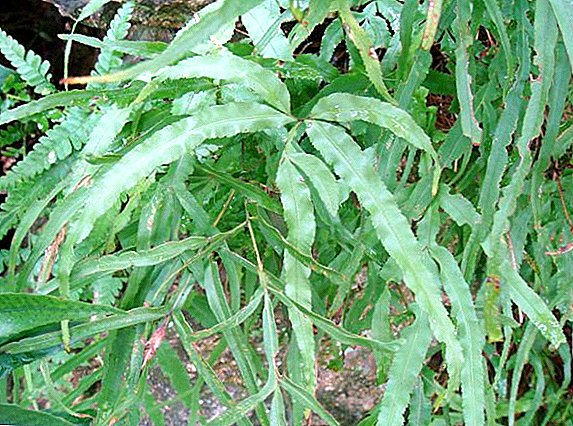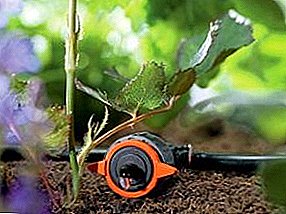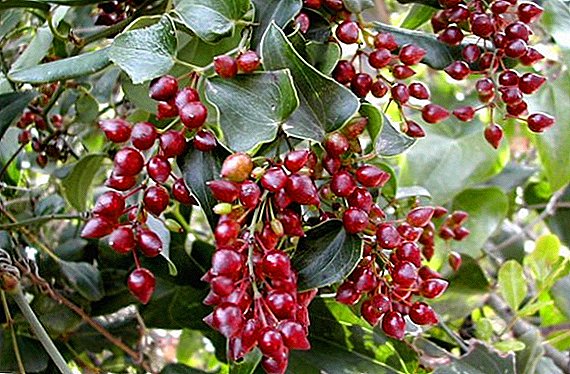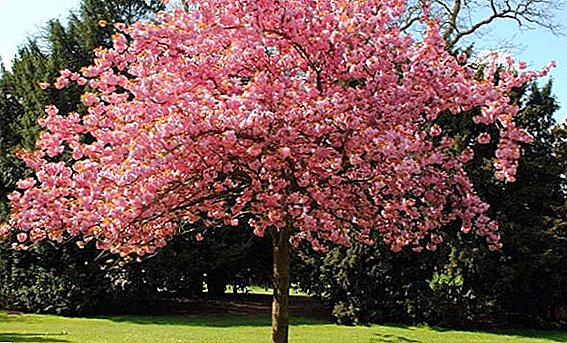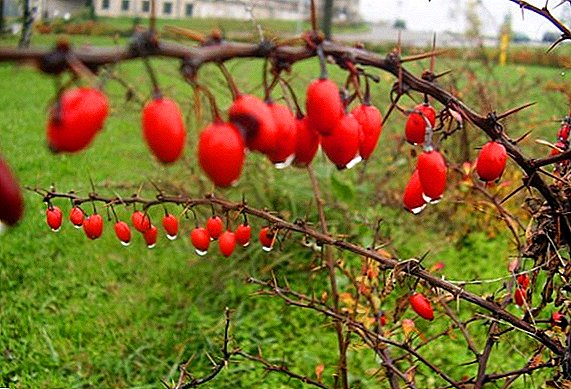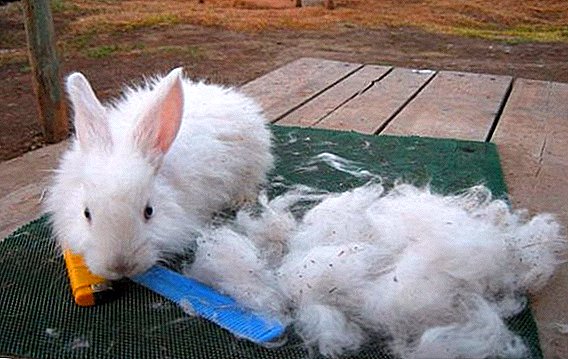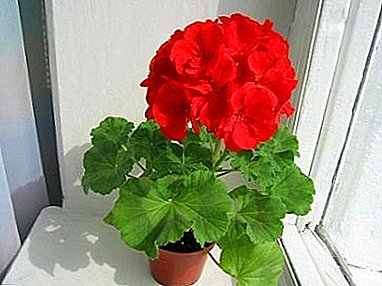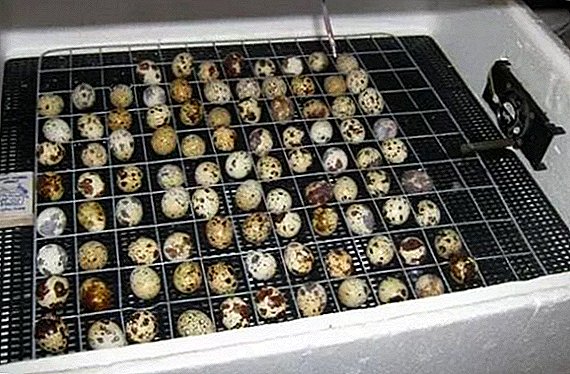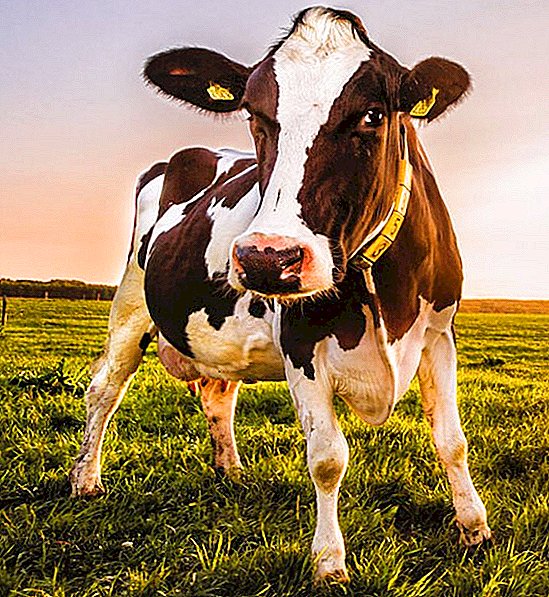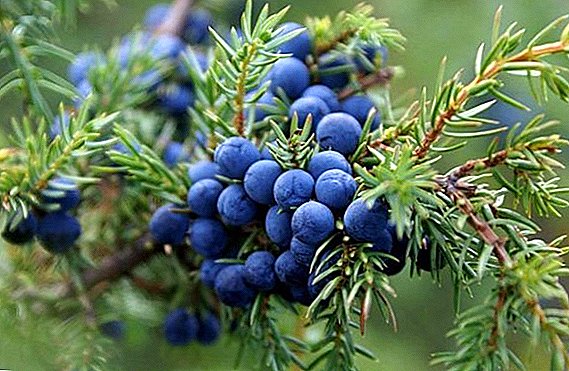 Juniper is an evergreen long-lived tree or shrub from the cypress family. Its branches can be spreading or flexible, covering the ground with a thick green carpet.
Juniper is an evergreen long-lived tree or shrub from the cypress family. Its branches can be spreading or flexible, covering the ground with a thick green carpet.
Siberian juniper is particularly notable among this rich variety.
Juniper in Siberia: the best varieties for growing
A plant such as juniper has a good frost resistance, which allows it to be grown even in Siberia. Despite the harsh climatic conditions, the following types of juniper are widespread in this region:
- Siberian;
- Cossack;
- solid;
- ordinary;
- Chinese;
- Virginia;
- scaly.
Did you know? The oldest juniper grows in the Crimea. According to one version, its age is about 400 years, according to another - 2000 years. Such inaccuracy is caused by the fact that it is extremely difficult to establish the exact age of a living plant.
What is needed for growth
A distinctive feature of juniper - unpretentiousness. In the specialized literature you can find information about the cultivation of juniper in Siberia, and aspects such as planting and care, accompanied by a large number of photos. In order for this species to grow bright, lush and beautiful, it is necessary to provide it with suitable soil and proper lighting.
Important! If for planting on your site juniper is dug in the woods, then before that you should definitely notice the side that is more illuminated by the sun. At the new place, this side should also be placed towards the sun.
Lighting
This species loves sunlight, but easily tolerates shading. When growing juniper, try to avoid extremes in the matter of lighting - do not place it in open areas where it will be exposed to direct sunlight. Also, unacceptable large shading, since in such conditions significantly increases the risk of disease and damage by various pests. In addition, in the shade juniper can grow shapeless, losing all its decorative properties. 
Growing soil
This species, like all the others, is practically undemanding on soil fertility. In the wild, powerful roots of the plant are able to extract the necessary moisture and nutrients from even the poorest soil. Siberian juniper can be grown in the garden with sandy or peaty soil. And even the rocky substrate is also suitable for cultivation.
Important! If the soil is very acidic, then it is possible to normalize the level of its acidity by adding peat, sand and wood chips.
Basic landing rules
For planting this type of juniper does not need to wait for warm weather, it can be planted in early spring immediately after the snow melts. Young stock can be planted in the later spring period, but in this case there is a possibility of needles burning. Planting in the fall is not recommended, as the shrub may not settle down and fully acclimatize before the onset of cold weather.
Landing pit preparation
The initial stage of planting is digging a hole. The dimensions of the pit are directly dependent on the size of the seedling. Usually, a square pit measuring one meter by meter will be sufficient for planting a Siberian juniper. Dimensions can vary, most importantly, you need to ensure that the pit was 2-3 times larger than the earthen room. At the bottom of the pit you need to lay a layer of drainage (gravel or broken bricks).
Did you know? Junipers often grow around coal beds. Geologists use this amazing property when searching for coal deposits. Thus, the Moscow region coal basin was opened.
Landing pattern
The landing scheme of this type is quite simple, the main thing is that everything must be done carefully and gradually:
- the distance between seedlings should be at least 1.5 m;
- before planting the seedling into the soil, it is necessary to carry out its preliminary disinfection in a solution of potassium permanganate;
- the plant is planted in a pit along with an earthy clod;
- after the pit is half filled with soil, it is necessary to pour a bucket of water into it and plant a seedling;
- after planting, the soil should be mulled with foliage or sawdust (5-8 cm layer).

Juniper care in the Siberian garden
Siberian juniper is an unpretentious plant not only in relation to the soil, but also to care. Care of a juniper in the Siberian garden includes three main aspects:
- regular watering;
- high-quality feeding;
- pruning.
Important! The best rooting of the sapling will be promoted by a special conqueror, sold in any garden store. This product is diluted directly in water for irrigation.
How to water the plant
Juniper is able to tolerate temporary drought, additional watering is required only in particularly hot periods. To maintain a sufficient level of moisture in addition to watering the bush itself, spray the branches of the plant. For irrigation it is better to use separated, soft water. Also, together with irrigation, you can loosen the soil, which will help the roots to be fully saturated with oxygen. 
Fertilizer and dressing
This species does not need frequent feeding. When planting, a nut shell or peat can be added to the soil as a fertilizer. In the spring, nitroammofosk is applied to the soil at the rate of 30-40 g per square meter. If necessary, the NPK can be replaced with a complex fertilizer for coniferous plants. Usually such fertilizer can be found in the garden shop. Use it with caution, in strict accordance with the attached instructions. In particularly dry periods, you can feed with nitrogen fertilizers.
Did you know? Juniper berries are actually pine cones.
Trimming rules
Before pruning, a thorough inspection should be carried out for damaged branches. Pruning is best done once a year. During preventive pruning, only diseased and dry branches are removed. Molding pruning involves the removal of healthy shoots. It is not recommended to cut more than 7 cm, since in this case juniper can get sick. 
Bush reproduction
Juniper propagation is carried out in two ways:
- Cuttings. A 12 cm long stalk is cut from an adult plant so that 2-3 cm of stem remains on it. After the cutting, all the needles are removed, and it is placed for a day in liquid fertilizer to form roots. Then the cuttings are planted in pots, plunging 3 cm into a mixture of peat and sand in a 1: 1 ratio. Cuttings need to pour and gently cover with film. Tanks with planted cuttings are stored at a temperature not lower than +22 ° C. Every 5 hours the film must be removed. The appearance of the first roots occurs after a month and a half. It is possible to replant in pots in 2 months, and after 2-3 years - to a permanent place.
- Seeds. You can sow both purchased and seeds collected from early planted plants. Sowing of seeds is carried out in May. Before the sowing procedure, it is necessary to first hold the seeds in a three percent solution of potassium permanganate for half an hour. After that, they should be in liquid fertilizer for 2 hours. Sowing is carried out on a previously prepared place according to the scheme 50 × 80.

How to take care of the plant in the winter
During the first two years, the young seedling is sheltered for the winter with lutrasil or with any other similar material. An adult plant with a spreading crown should be tied up with a twine or rope in order to prevent a possible break of the branches under the weight of snow. It is recommended to periodically shake off the branches of the snow layer.
You will certainly be curious to learn about coniferous plants such as myrimary foxtail, Nordman fir, cryptomeria, larch, western thuja.To maintain the brightness of the needles in the winter, regular watering and fertilization in the spring and late summer will help. To do this, you can use granulated bait, and the needles themselves must be sprayed with boric, molybdenum or copper micronutrient fertilizers.
 Siberian juniper is a plant widely used for decorating summer cottages. The presence of this amazing plant on the site will allow you to create and emphasize its truly unique image.
Siberian juniper is a plant widely used for decorating summer cottages. The presence of this amazing plant on the site will allow you to create and emphasize its truly unique image.

